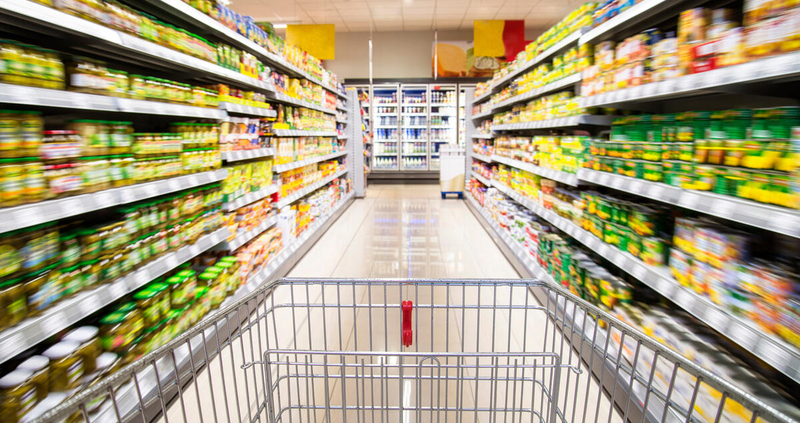Design Sustainable Packaging
Environmental Defense Fund
By using sustainable materials and incorporating smart designs and systems, companies can significantly reduce the impact of their packaging on the environment and human health, thereby progressing towards net zero goals. Further, simple labelling and clear instructions on disposal can better inform customers on how to handle packaging waste.

According to the EPA, packaging accounts for about one-third of municipal waste generated in the U.S.1 Plastic packaging accounts for almost 18% of the waste generated in the U.S., and an estimated less than 14% was recycled in 2018. Furthermore, today’s convenience culture results in food packaging being a major sector of packaging: the production of packaging consumes 5% of energy used in the life cycle of food products and is a significant source of the world’s greenhouse gas emissions.2
When it comes to sustainable packaging, it’s not just about reducing waste and carbon emissions. You should also reduce the amount of toxic chemicals in your packaging. The UNEP reported in May 2023 that more than 13,000 chemicals are identified to be associated with plastic production, over 7000 of these chemicals have been studied for their hazardous properties, and more than 3200 of these are known to be hazardous.3 These statistics illustrate the importance of designing sustainable packaging to minimize environmental and human health impacts.
Optimize Packaging Design for Sustainability
The first step towards sustainability is to design your company’s packaging to reduce its environmental and toxic chemical footprints from the outset. For example, the production of chemicals, which includes petrochemicals often bound for plastic packaging, is both energy intensive amounting to 14% of industrial greenhouse gas emissions,4 and toxic to nearby communities. To reduce your chemical footprint, vet your packaging materials for toxic chemicals that may contaminate recycling or compost streams or leach into the environment if landfilled or disposed of irresponsibly.5
Consider Innovative Solutions, Including Reuse Systems
Innovative packaging solutions could help address your product’s environmental footprint and make you stand out in a crowded marketplace. For example, Loop works with brands to design durable, reusable packaging that can be returned, cleaned, and refilled. This eliminates the need for single-use packaging and reduces waste. Loop has partnerships with major brands like Procter & Gamble, Nestle, and Unilever.6
Case Study
Coca-Cola
The Coca-Cola Company and its Bottling Partners introduced the Universal Bottle in 2018 in Latin America, a reusable plastic (PET) bottle that can be used and re-used across multiple soda brands. The Latin American market comprises about 10% of Coca-Cola’s total revenue.7 On average, these bottles are intended to be reused up to 25 times and are estimated to reduce overall plastic use by 90%.8
Use Recyclable and Sustainably Sourced Materials
Using recyclable materials derived from responsibly sourced renewable resources in your company’s packaging can significantly reduce its environmental footprint and minimize waste.
When materials are recycled, they are diverted from landfills and are reused or re-processed into new products. Most packaging is not recycled, though it may technically be recyclable. For example, in the US, 5% of plastic is recycled, according to a 2019 study.9 (The US EPA’s estimate in 2018 was 6.8%.10) You should consider materials that are widely accepted in most recycling programs, such as cardboard, paper, glass, and aluminum. When choosing recyclable materials, also consider the end-of-life of the packaging. For example, materials that are easily recyclable in a closed-loop system, such as glass and aluminum, should be prioritized over materials that can only be recycled once or twice, such as certain plastics.
Renewable materials are plant-based materials and can be replenished over time. One example of a renewable material used in packaging is paper made from sustainable sources, such as Forest Stewardship Council (FSC)-certified forests. By using renewable materials, your company can reduce its reliance on fossil fuels and petrochemicals and decrease its carbon footprint. In designing packaging from renewable materials, you must ensure that the materials are derived from stocks that are responsibly managed and sourced. You must also vet your supply chain for additives, coatings, or contaminants that may be made of toxic chemicals to ensure the material is safe and sustainable. For example, the Biodegradable Products Institute (BPI), a leading verifier of compostable products in North America, adheres to a standard that PFAS cannot be present above a level indicating intentional use.
Case Study
Apple
Apple has a general commitment to using only recycled and renewable materials in its products and packaging, with a time-bound goal of eliminating plastics from packaging by 2025. In 2022, 20% of all materials shipped in products came from recycled sources, and it is working to increase the amount of recycled materials used in its packaging. Apple is also committed to driving comprehensive reporting of the chemicals used in its supply chain and has committed to phasing out PFAS, a family of toxic chemicals, from its products and manufacturing processes.11
In all cases, you must make sure consumers understand what to do with your packaging when they are done with it. Claims such as recyclability, compostability, and biodegradability must be verified, and proper disposal associated with these labels need to be communicated to the consumer. The How2Recycle label provides clear, on-package recycling instructions for consumers, including if any additional steps are required before recycling.
Footnotes:
- EPA | Facts and Figures about Materials, Waste and Recycling
- Climate Collaborative | Commitment: Reduce the Climate Impact of Packaging
- UNEP | Chemicals in Plastics – A Technical Report
- IEA | Energy System – Industry
- Science News | Chemicals in biodegradable food containers can leach into compost
- Loop | Purpose
- Market Us | Coca-Cola Statistics and Facts
- Ellen MacArthur Foundation| Coca-Cola’s Universal Bottle
- Anelia Milbrandt, Kamyria Coney, Alex Badgett, and Gregg T. Beckham | Quantification and evaluation of plastic waste in the United States
- EPA | Plastics: Material-Specific Data
- Apple | Environmental Progress Report